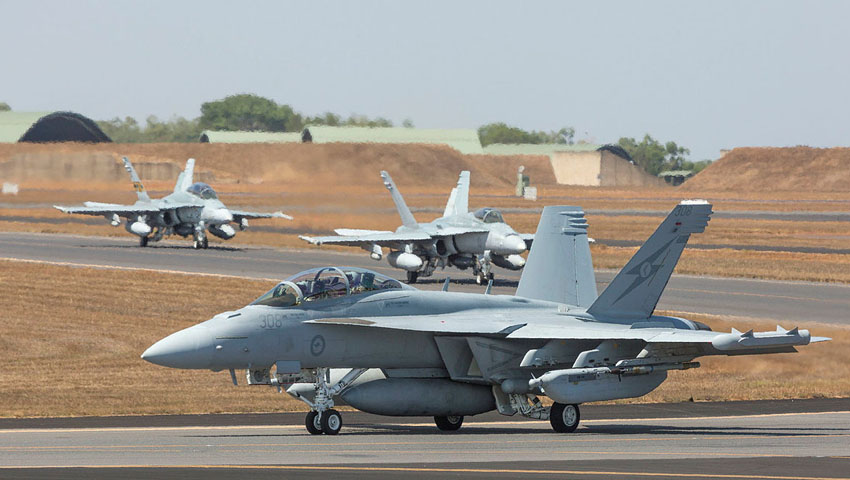Despite restrictions caused by COVID-19 cancelling the 2020 iteration of Exercise Pitch Black, Royal Australian Air Force planners are preparing for the 2022 incarnation, with the debut of the RAAF’s F-35 Joint Strike Fighters a major milestone.
Traditionally held in the Northern Territory every two years, Exercise Pitch Black is the premier international engagement activity of the Royal Australian Air Force.
Restrictions due to COVID-19 led to a decision to cancel Exercise Pitch Black, but planning is underway for the exercise’s return in 2022. It will see the return of regional neighbours flying Large Force Employment missions with the RAAF, which will debut its F-35A Joint Strike Fighter aircraft in the exercise.
Going forward, Exercise Pitch Black is expected to diversify beyond the practice of air power.
Director General Air Defence and Space in Air Force Headquarters Air Commodore Philip Gordon said future exercises would need to adopt a multi-domain approach, as the RAAF and partner air forces around the world transition to a fifth-generation baseline.
"As an Air Force, we have already made the shift from de-conflicted to co-ordinated operations and we are now working towards realising truly integrated operations. In the past, Pitch Black has focused heavily on air combat training. While this will always be a bedrock of our contribution to the joint force, I see Pitch Black increasingly moving to multi-domain operations with the increased inclusion of space and joint considerations," AIRCDRE Gordon explained.
When the exercise was first conceived in 1981, it was focused on Air Defence, with Mirage IIIO fighter aircraft scrambled to intercept 'enemy' strike aircraft. The scope of the exercise grew significantly with its relocation to the Northern Territory, but the 'air defence' nature of the exercise remain unchanged until 2002.
Following this, the focus then shifted towards large force employment, with groups of 'friendly' aircraft required to cooperate with one another on missions in an increasingly networked airspace.
That focus remains in practice today but future capabilities for Defence – including those outlined in the 2016 White Paper and 2020 Defence Strategic Update – will need to be factored into future Pitch Black exercises.
Ensuring this multi-domain approach will be critical for keeping Exercise Pitch Black relevant, not just for the Australian Defence Force but also for regional partners.
Director General Strategy and Policy within Air Force Headquarters Air Commodore Philip Champion said the exercise remained extremely relevant within the region.
"Exercise Pitch Black is aimed at high-end air combat training and is a major opportunity to train with our partners on a large scale. The actual attendee list is quite challenging, as we have to balance both available space against the desire to have as many of our partners join as we can manage," AIRCDRE Champion said.
International involvement in Exercise Pitch Black has grown significantly since the US became the first foreign participant in 1983. Since then 12 nations have participated in the exercise with their aircraft.
Singapore has contributed to every exercise since 1990 and regional neighbours such as Malaysia, Indonesia, Thailand and New Zealand are now regular participants.
More recently, the exercise has seen first-time participation with aircraft and personnel from the United Arab Emirates (2014), Canada (2016) and India (2018).






